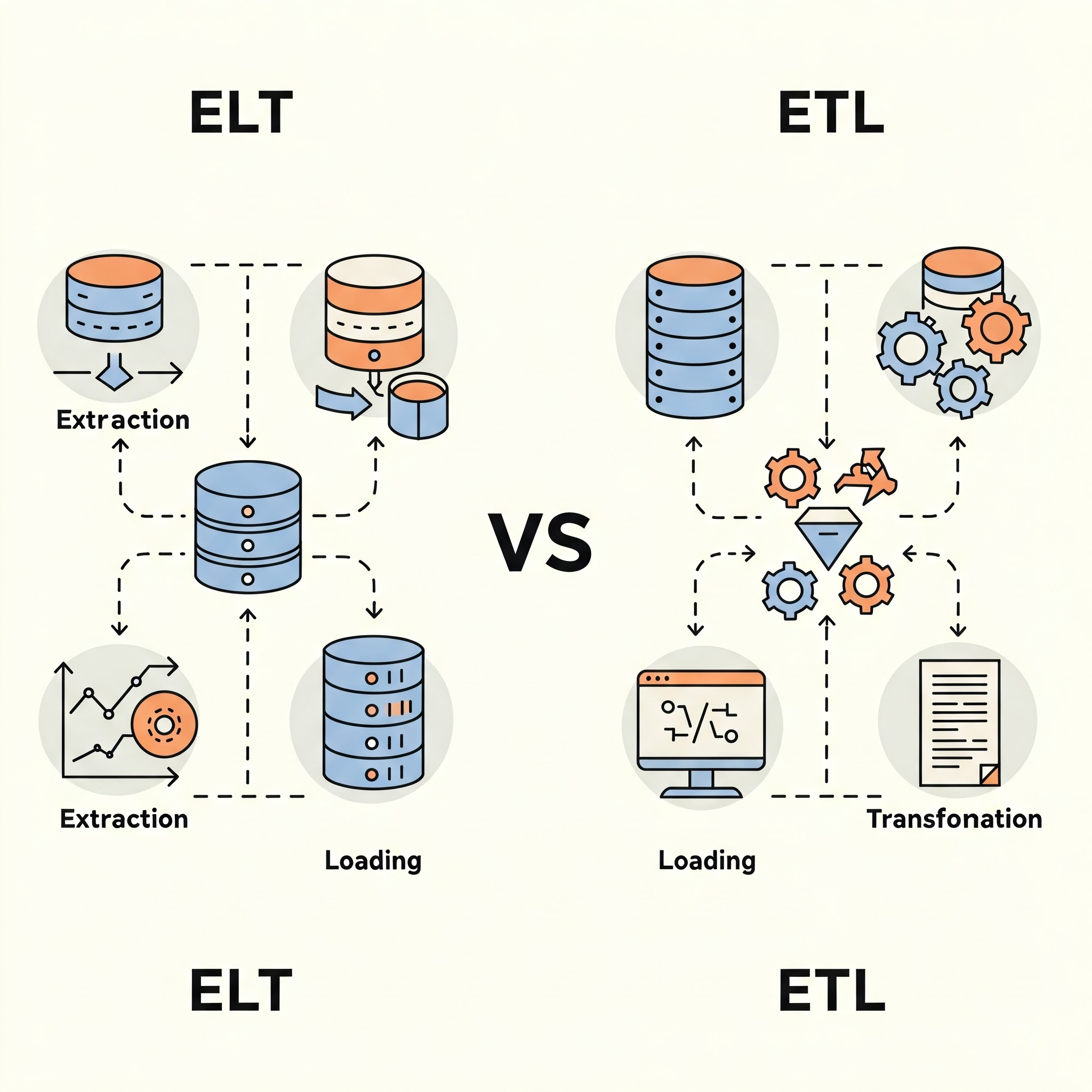Rooted
In Excellence
Racing
Ahead in Innovation
RootRace Software Solutions
Rooted
In Excellence
Racing
Ahead in Innovation
RootRace Software Solutions

In the realm of data engineering, ETL (Extract, Transform, Load) has been the traditional approach for data integration. However, in recent years, ELT (Extract, Load, Transform) has gained significant traction and is increasingly becoming the preferred method. As data volumes grow and businesses need faster insights, ELT offers several advantages over ETL. In this blog, we’ll explore why ELT is taking over and how it’s shaping the future of data engineering.
ETL (Extract, Transform, Load) is a traditional data integration process in which:
ETL is well-suited for environments where transformations need to occur before data is loaded into the data warehouse, ensuring that only clean, structured data is stored.
ELT (Extract, Load, Transform) is a more modern approach to data integration. In this process:
The key difference between ETL and ELT is the order of operations. ELT loads raw data into the target system first and then applies transformations, whereas ETL transforms data before loading it.
Here are the key reasons why ELT is becoming the preferred choice for modern data engineering:
Cloud-based data warehouses like Snowflake, Google BigQuery, and Amazon Redshift have made it easier to scale storage and compute resources on-demand. ELT takes advantage of this scalability by allowing raw data to be loaded into the warehouse, where it can be processed later. With these cloud services, businesses no longer need to worry about the resource limitations of traditional ETL processes.
"ELT minimizes the upfront transformation work and allows the cloud data warehouse to handle large data volumes with scalability and flexibility."
In the ETL process, transformation steps can take significant time, especially when dealing with large datasets. ELT, on the other hand, allows businesses to load data quickly and start analyzing it almost immediately. The transformation steps occur later, often in parallel with other processes, reducing delays in accessing raw data.
"Faster access to raw data allows teams to generate insights and reports quickly, accelerating decision-making and improving business agility."
Modern data sources often produce unstructured or semi-structured data, such as JSON, XML, and log files. ETL processes can struggle with complex, raw data formats because they require data to be transformed before it’s loaded. ELT’s approach of loading raw data allows data engineers to apply transformations directly to the data within the warehouse, enabling better handling of unstructured data.
"ELT can work with diverse data sources, including semi-structured and unstructured data, without needing predefined transformations."
ELT provides flexibility in how and when data transformations occur. Transformations can be done in batch jobs or in real-time as needed, making it easier to modify the transformation logic over time. This flexibility also ensures that data engineers can focus on building the most relevant and optimized transformation logic based on current business needs.
"Organizations can adjust data transformations based on changing requirements or new insights, without being constrained by rigid ETL workflows."
In ETL, you often need to provision separate ETL servers or tools to perform data transformations before loading data into a warehouse. With ELT, transformation happens within the data warehouse itself, meaning businesses can leverage the warehouse's compute power rather than managing a separate ETL pipeline. Many cloud data warehouses also provide cost-efficient compute options where businesses can pay for resources only when needed.
"ELT helps reduce infrastructure and operational costs by leveraging the cloud warehouse's native capabilities for transformation."
While ELT has many advantages, there are still situations where ETL might be a better choice:
However, for modern data engineering workflows that require scalability, flexibility, and speed, ELT is often the preferred choice.
As businesses continue to collect massive amounts of data and the demand for real-time insights increases, ELT will likely become even more prominent. The rise of cloud-native technologies, serverless computing, and big data tools (like Apache Spark) are all contributing to ELT’s growth.
In the future, we can expect to see:
ELT is undoubtedly taking over the world of data engineering due to its speed, scalability, and flexibility. By loading raw data first and applying transformations later, organizations can streamline their data workflows and accelerate time-to-insight. With cloud-based data warehouses and advanced processing tools, ELT is poised to be the future of data integration.
At RootRace Software Solutions, we specialize in implementing ELT pipelines and modern data engineering architectures. Whether you’re migrating to the cloud or optimizing your data workflows, contact us today to learn how we can help you build scalable and efficient data systems.